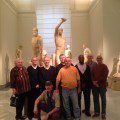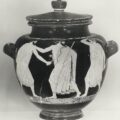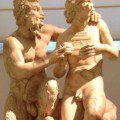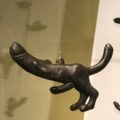While I was in Greece researching Oscar Wilde Tour’s 2016 Greece tour, I was following a great story from gay history: the story of the ancient Athenians’ favorite heroes—right up there with Theseus, the city’s mythical founder— Harmodius and Aristogeiton, the male-male couple who assassinated the brother of the last tyrant of Athens and whom the Athenians regarded as the founders of the democracy. It would be hard to exaggerate how honored these guys were in Athens.
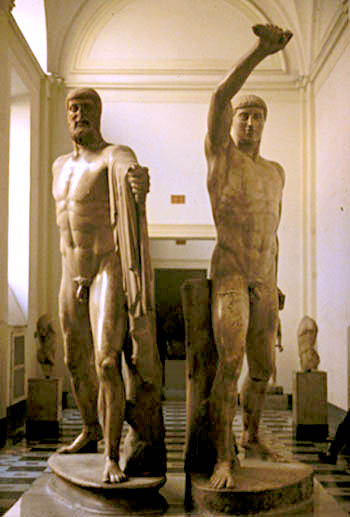
They were treated as “heroes,” i.e. demi-gods, like Oedipus or Achilles, and their grave received sacrificial offerings. Their descendants were fed free at the city’s expense. And they were honored in people’s private lives as well: we have the words of several songs about them that Athenians used to sing at their symposia—the late night drinking parties where Athenian males bonded, personally and politically. In fact—to give you an idea of how big a deal they were—when the Persians burnt Athens to the ground in 490 BC, they stole the statues and took them to Susa, so the Athenians had a second set made (probably the ones in this post); then when Alexander invaded Persia, he brought the originals back to Athens, so at some point there may have been TWO sets of statues of these guys in the Agora!
They also come up in Greek literature: they are mentioned for instance in both of the fathers of history, Herodotus and Thucydides, and also in Plato’s Symposium. And amazingly, a couple of bits of the story are still visible in Athens today. Part of the base of their monument was dug up in the Agora, and you can see it in the Agora Museum, and the demosion sema–the public grave for the city’s heroes–where they were buried and worshiped is still visible in the Kerameikos, ancient Athens’ burial ground. Unfortunately, there is no version of the famous statues of them in Greece any more, but there is a Roman copy in the Naples Archaeological Museum. On the basis of the remaining copies, the original monument has been reconstructed, and you can see how they were portrayed: first of all, they were together, as a couple, acting heroically together. In fact, I think you could say they are portrayed as a model for every Athenian male, whose principal task was to bravely defend the democracy against tyrants. And to the ancient Greek mind, the best way to do that was with your lover at your side. A great reminder of how the Greeks saw male-male love, as the greatest source of loyalty and courage, in short as hyper-masculine—a pretty stark contrast to our own culture’s traditional view….

